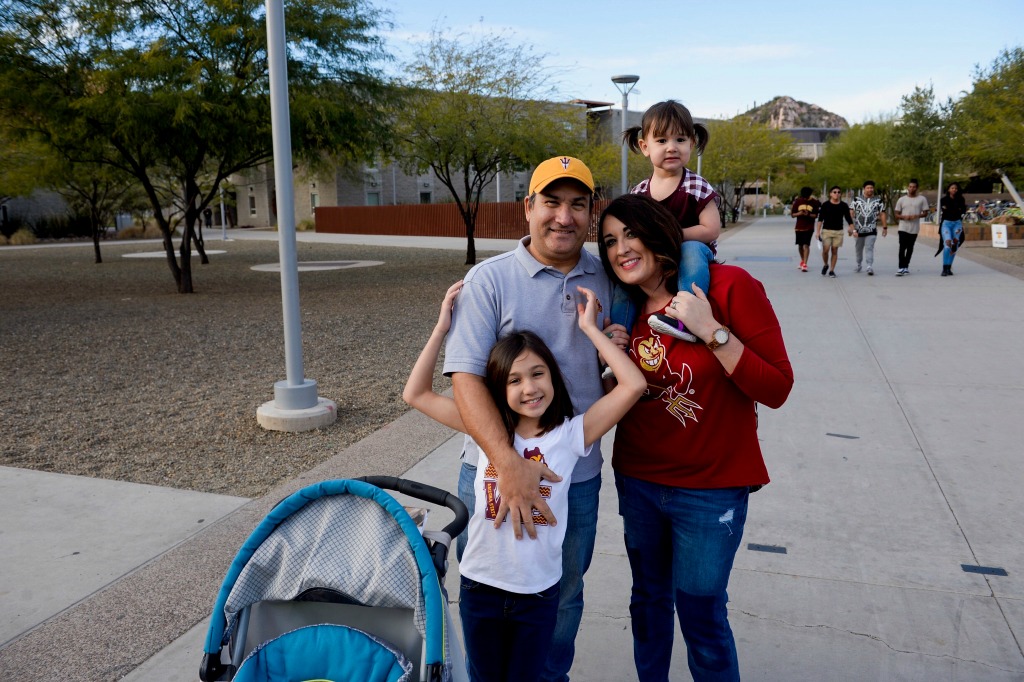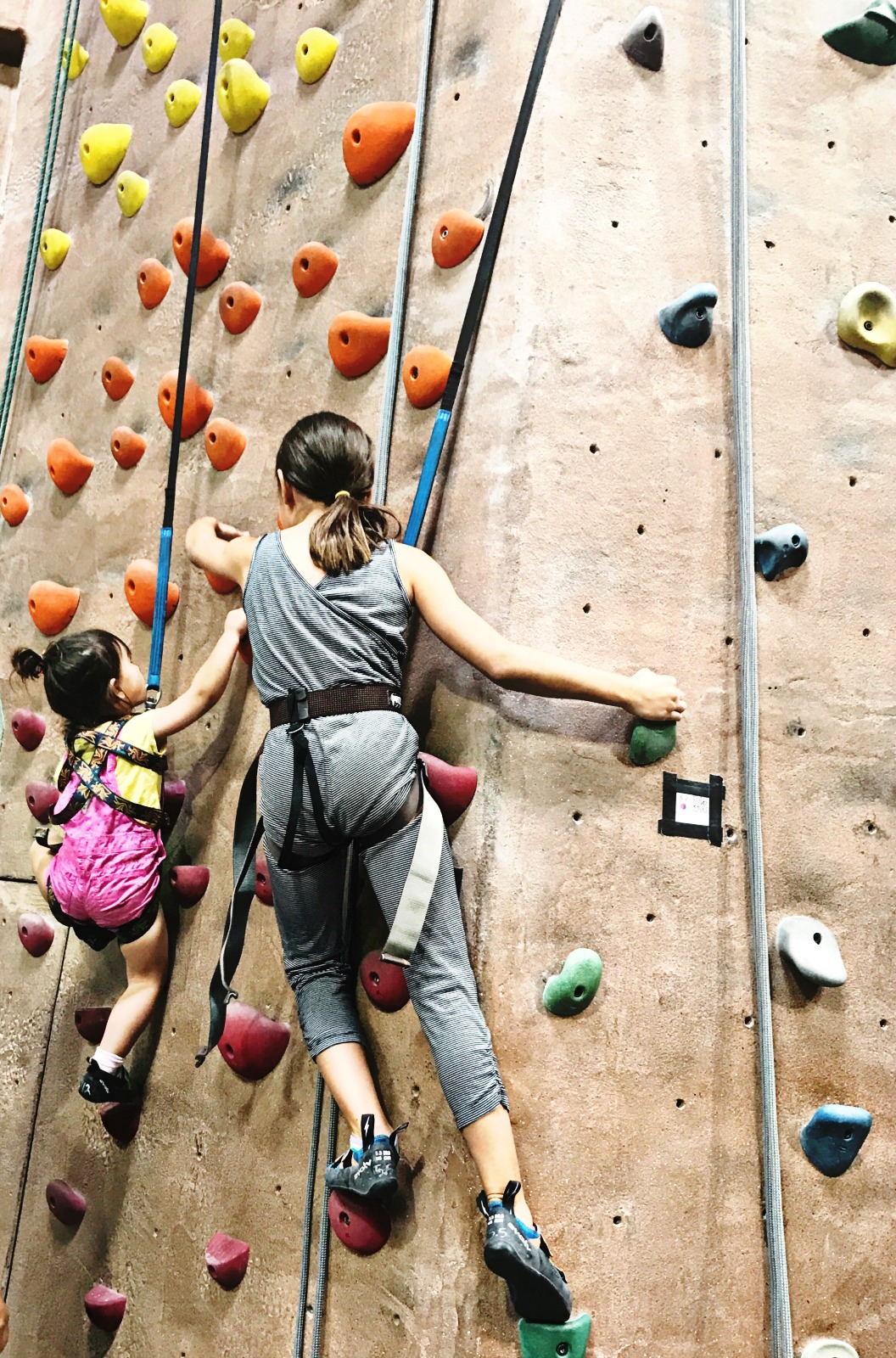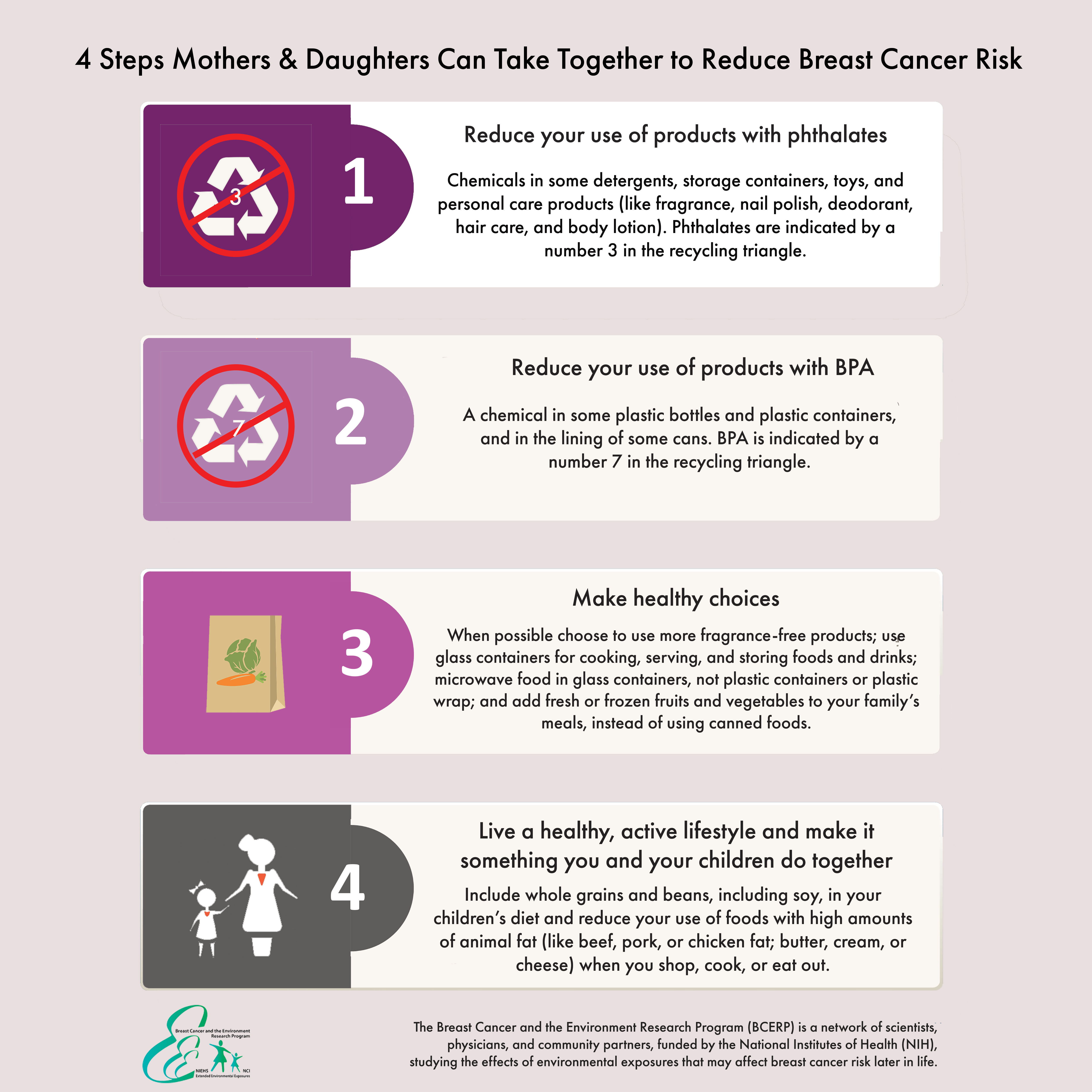This post is sponsored by the Breast Cancer and the Environment Research Program (BCERP). All thoughts and opinions are my own.
Our daughters inspire both my husband and I to be so much more than we ever were before having children. We have two little girls with absolutely opposite personalities but that same magical wonder in every new experience and brave adventure. We do our very best to provide a healthy and nurturing environment for our daughters and it’s disappointing to learn there are many factors beyond our control contributing to their overall health and wellness. The environment contributes to their physical development and although with the research it is too soon to say for sure that avoiding certain chemicals or foods lowers the risk of breast cancer, it’s certainly a healthy initiative that can only be better for our daughters and all young girls. The Breast Cancer and the Environment Research Program has a number of resources for parents and families on how to reduce risk.
My close family has no direct history with breast cancer, but we do have cancer riddled all over our family medical history. Additionally, it’s something we talk about often in our home because for my husband’s entire career, he has worked in women’s healthcare and improving diagnostic health. Microscopes, body part models and slides with images of diseases like cancer are fixures in my husband’s home office and something our daughters don’t bat an eye too. They have been exposed to the scientific advances in medical care and disease prevention their entire lives simply because of their daddy’s work. On a personal note this topic hits close to home because our daughters, and all young girls, deserve the best opportunity to help reduce their risks and as parents there are some things we can be doing to make a difference in our own homes. Scientists, physicians, and community partners in the Breast Cancer and the Environment Research Program (BCERP), which is supported by the National Institutes of Health (NIH), study the effects of environmental exposures on breast cancer risk later in life. They created a mother-daughter toolkit that mothers can use to talk to daughters about steps to take together to reduce risk. We can’t protect them from everything but with a few simply changes at home, we really can make a huge positive difference to their growing bodies.
How to Reduce your Daughters’ Breast Cancer Risk
Reduce your use of products with phthalates
Phthalates are indicated by a number 3 in the recycling triangle on packaging. We’ve been hearing for many years the chemicals in some products put us at higher risk for unnatural diseases. By simply reducing your use of these products in your home you can limit the exposure to phthalates.
Reduce your use of products with BPA
Another one your parents might have warned you about, the negative effects of BPA has been found throughout research over the past few decades. BPA is indicated by a number 7 in the recycling triangle.
Make healthy choices
Overall healthier choices help the environment and your daughters’ exposure to chemicals and materials that may be a cause to the growing list of risk causes for breast cancer. It’s not difficult to fully stop microwaving in plastic containers but rather use glass storage and serving bowls instead. Avoid use of plastic wrap and always choose fresh or frozen fruits and vegetables before canned. Seek out fragrance-free products to limit your daughters’ exposure to unnecessary chemicals.
Live a healthy and active lifestyle
Make a few small changes to your diet and be sure you are teaching your daughters to enjoy an active lifestyle. Set the right example and be active with your children. Diet changes include incorporating whole grains, beans and soy. Avoid cooking with high amounts of animal fat, butter, cream or cheese.
Everyday we are busy with an activity but because of big sister’s endeavors in youth competitive rock climbing and her little sister wanting to follow every move, we are always doing something active. Our girls are thrill seekers and living an active lifestyle comes easy but without the genuine enthusiasm for a sport she loves, big sister could easily enjoy spending more time at home on electronics. Find an activity your entire family can enjoy together and embrace it with excitement to start an active routine.
Currently statistics show one in eight women will be diagnosed with breast cancer during their lifetime. There are certainly things we can do to improve early detection like regular exams and awareness of our bodies, but as mothers, lets step ahead of the diagnosis and help to reduce our daughters’ breast cancer risk.
Everyday the research is providing more opportunities and guidance for what we can do to help reduce breast cancer risks. Help with this important work researchers are doing by simply completing this survey.
Do you have personal experiences with breast cancer in your family and want to help reduce your daughters’ risk too?
BCERP’s education materials are based on scientific evidence and available free to the public. However, BCERP has guidelines and requirements when using their documents, which can be accessed here.








I don’t have daughters, but I worry about ME. My grandmother is a breast cancer survivor, so I know I have an increased risk.
I’m a breast cancer survivor so I worry about my daughter. I did not have the gene so I am so glad about this. I didn’t know what the numbers mean in the recycling triangle, so thank you!
I recently wrote about this as well. There are so many things that we can do to help lower the risk of breast cancer for our daughters. I think it’s amazing that people are spreading the message. It’s a must.
I am so glad I stumbled upon your post. Before, I had no idea that every product contains these signs, I really never care. But now, I should be always vigilant, thanks for sharing this!
This is really great. While we don;t have any breast cancer in my biological family, I do have a history of other cancers there. My father had prostate cancer, and even though it has been attributed to agent orange, it still makes me worried that my risk and my kids’ risk of cancers could be higher. Living a healthy life is a wonderful way to reduce lots of health risks and to just generally enjoy life.
Some of these things I had never even heard of. So thank you for sharing! We want to reduce our cancer risks as much as possible, and I believe that every little bit can help that.
This is a great post and so informative. I am fearful of any risk factors in my family and would love to be able to predictmy daughter’s risk. I will be sure to follo these tips in the meantime.
Thank you for these tips. This is something that I really worry about and I hope I can make these changes in our lifestyle!
thank you for bringing awareness to this issue! it is so important to keep our children healthy and reduce their risk as well as ours!
Thank you for all these tips. It is so strange to think that things you do now can affect their health 30 years down the line.
I don’t have daughters but I think we can all glean some valuable insight from these facts. Awareness and early detection are key. Thanks for sharing this!
Great suggestions. Ever since my mom was diagnosed with colon cancer two years ago I’ve made a conscious effort to make better choices about what I eat, what products I use on my skin and in my home and how I live my life.
This is such an important post. I go annually to get my mammogram. Close friends were diagnosed and it shocked me.
This is great advice and tips for not only my children but myself and the women in my life. It’s important to try to be safe and limit our risk.
You never really think about this until you are older but it is true that you need to start preparing when you are younger. These are some great tips!
Being educated and aware of the signs are the most important when it comes to breast cancer. Great tips!